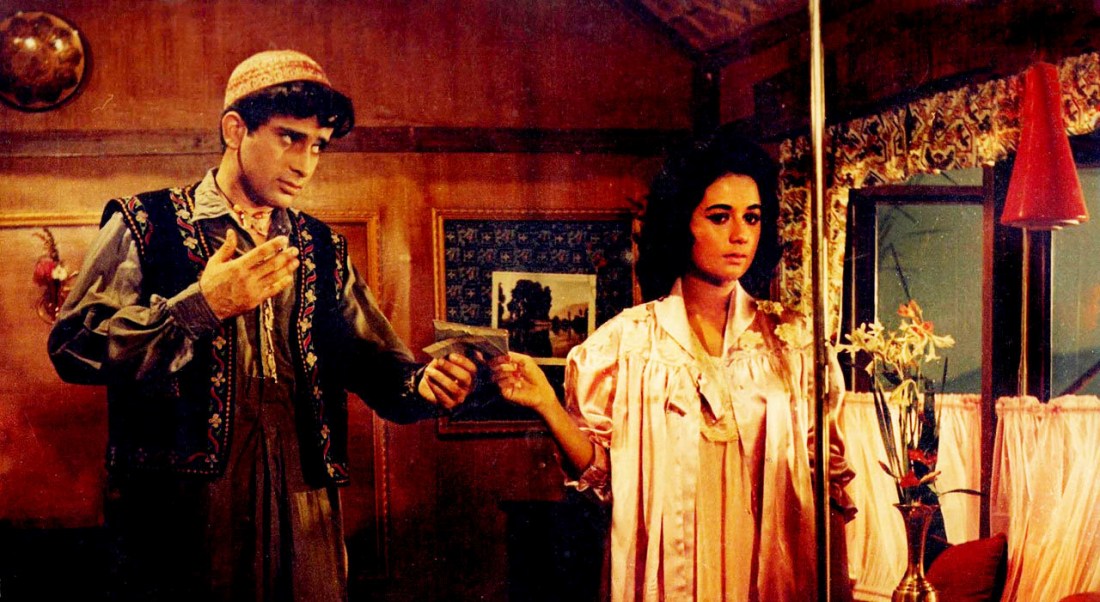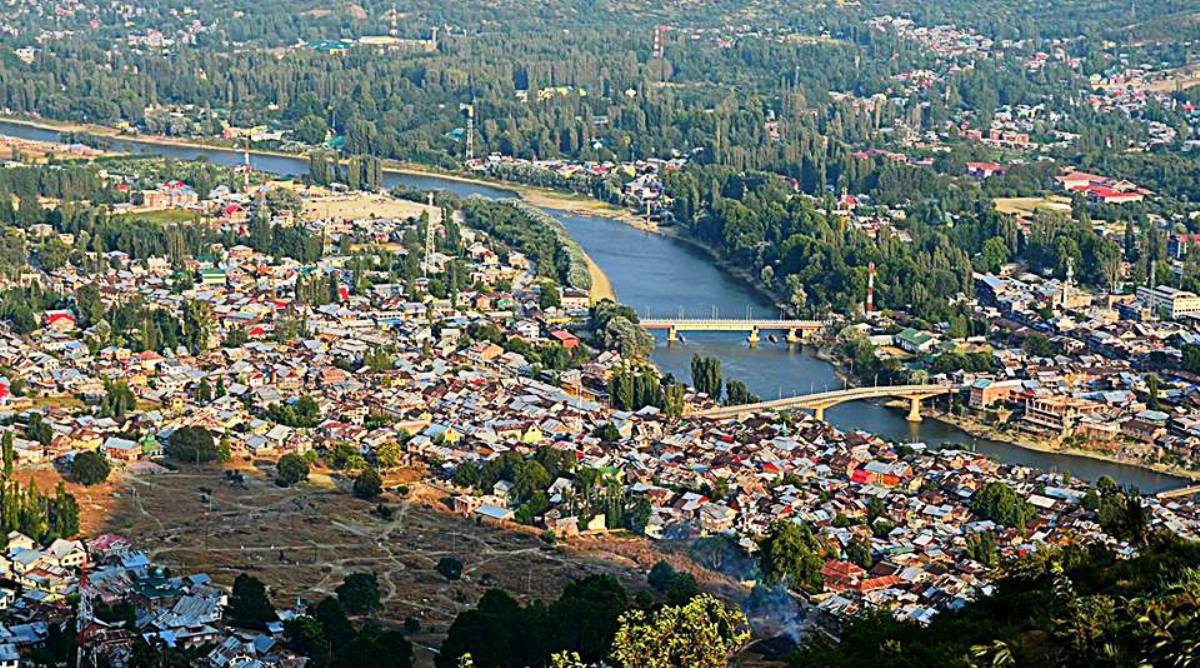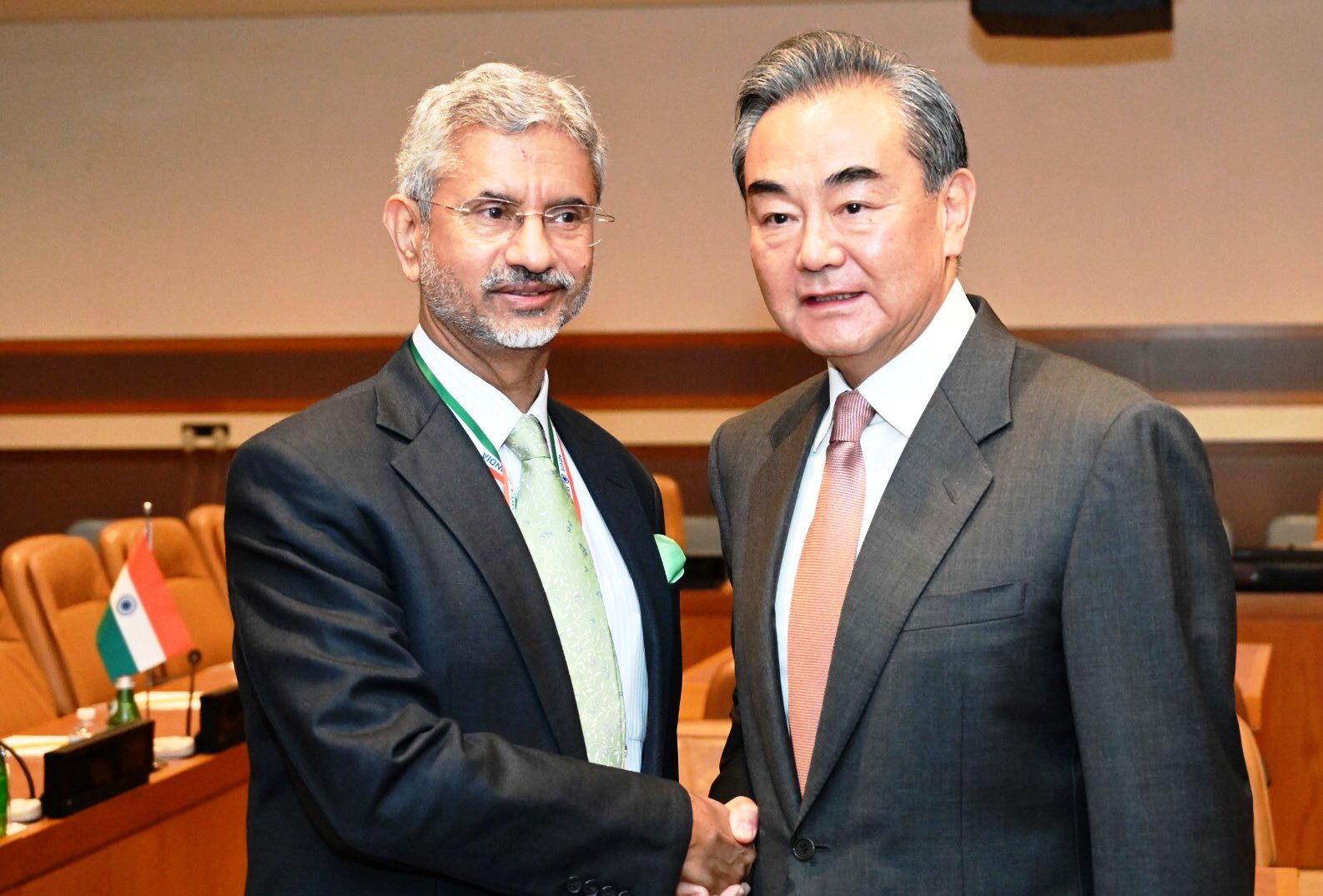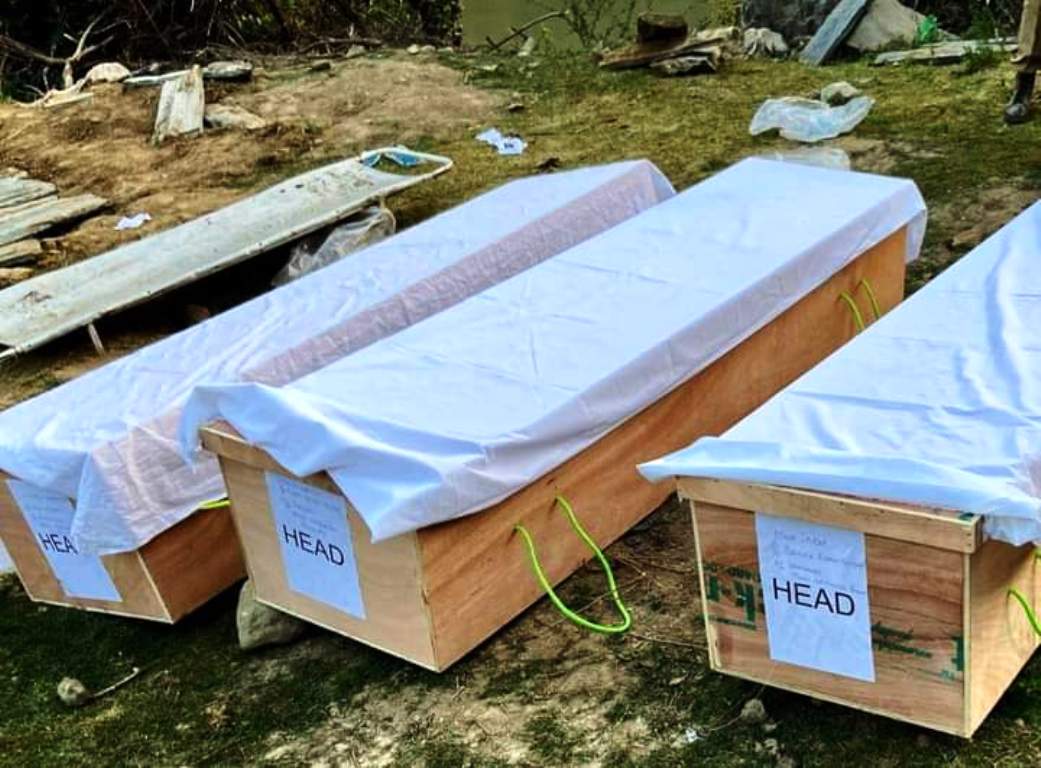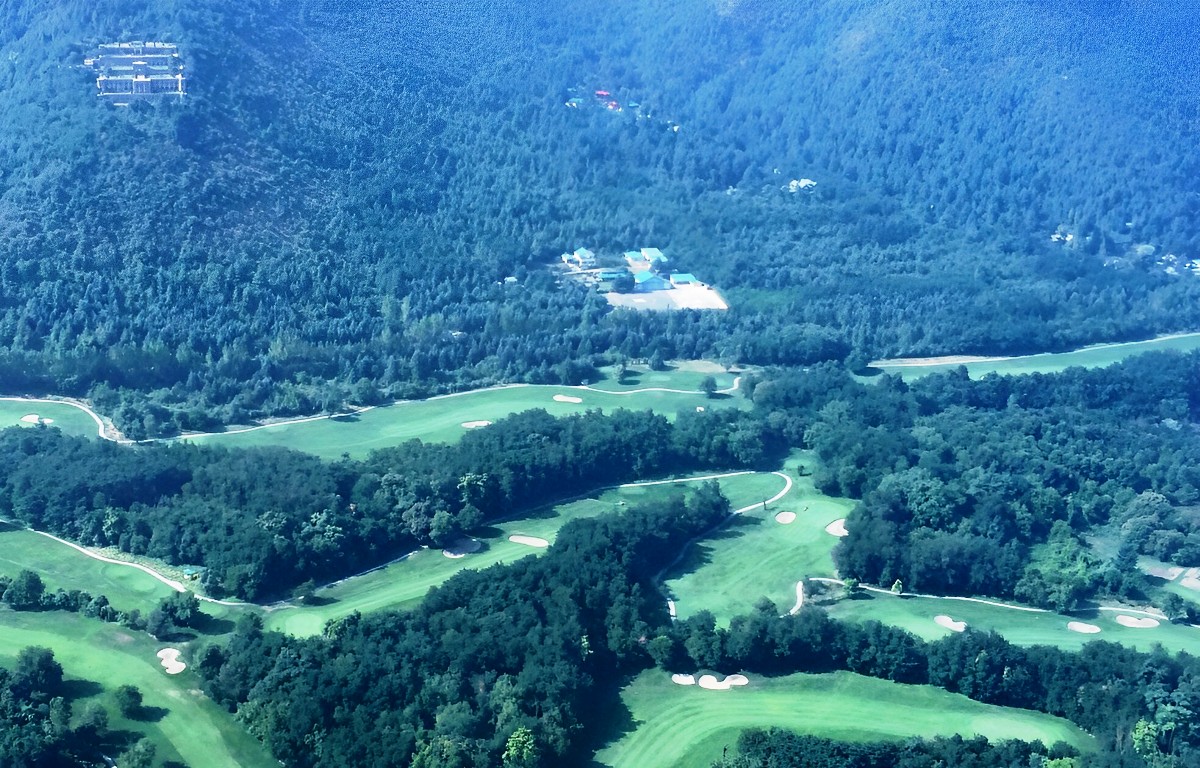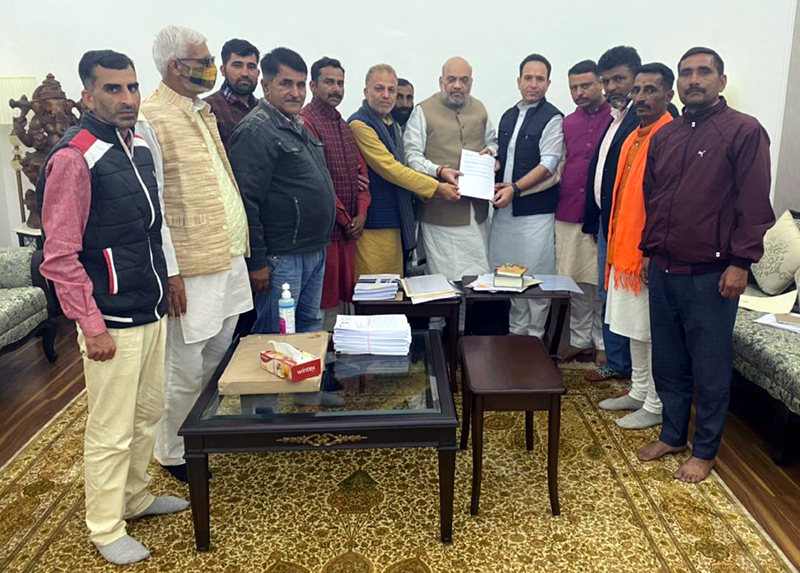[ad_1]
JKCET 2023 : Exam Date, Registration, Exam Pattern, Syllabus, Colleges
Jammu and Kashmir Board of Professional Entrance Examination (JKBOPEE) has invited Online Applications from the eligible/desirous candidates who are Domiciles of the UTs of J&K /Ladakh for admission to Bachelor of Engineering & Technology Courses- 2023 in Government / Private Colleges / Institutions of UT of J&K.
The registration process for admission to Bachelor of Engineering & Technology Courses-2023 will commence on April 4. Interested candidates will be able to apply online at www.jkbopee.gov.in. The last date for the submission of the application form is April 24
Candidates can check the highlights of JKCET 2023 from the table given below.
JKCET 2023 – Overview
Candidates can check the highlights of JKCET 2023 from the table given below
JKCET 2023 – Overview
Candidates can check the highlights of JKCET 2023 from the table given below.
Name of the Exam : Jammu & Kashmir Common Entrance Test (JKCET)
Conducted By : Jammu and Kashmir Board of Professional Entrance Examinations (JKBOPEE)
Exam Level : Undergraduate
Mode of Exam : Entrance Test
Course offered through the exam : B.E/B.Tech
Exam Duration : 3 Hours
Total Questions : 180
Marking Scheme : 1 mark will be given for every correct answer. 0.25 marks will be deducted for every wrong answer.
Medium of Exam : English
Colleges Accepting Exam Score : Government/ Private Colleges/Institutions of UT of J&K
No. of Test Cities : The examination shall be conducted Offline at Jammu / Srinagar designated Centres
Official Website : jkbopee.gov.in
Contact Details Help Desk : 0194-2437647 / 0194-2433590/ / 0191-2470102/0191-2479371 or
Email- at helpdeskjakbopee@gmail.com
The Jammu and Kashmir Board of Professional Entrance Examination (JKBOPEE) has announced the tentative JKCET 2023 Exam Date for Jammu and Kashmir Common Entrance Test (JKCET) 2023. As per the announced Exam Dates, the JKCET(Engineering) exam will take place on 4th April, 2023. Information with regard to the availability of Online Admit Cards, Venue and Time of the Entrance Test will be issued separately in due course of time if the entrance test is conducted by the Board.
Important Dates
Candidates can check the important Dates below:
Submission of online application forms : 04-04-2023
Last date for submission of online application forms : 24-04-2023
Date of Entrance Test : to be notified separately
Eligibility Criteria
Before filling out the JKCET 2023 Registration Form, candidates must read the JKCET Eligibility details, Because in order to appear in the JKCET, you must fulfill the eligibility criteria. Check out the JKCET 2023 Eligibility criteria mentioned below:
Applicant must be a Domicile of UT of J&K/UT of Ladakh
Candidates should have passed the 10+2 or Equivalent examination from a recognized statutory Board with Physics, Chemistry and Mathematics as compulsory subjects and with at least 45% marks as prescribed by the AICTE taken together for Open Merit Category candidates including the Children of Defence Personnel, Children of Para Military Force, Children of J&K Police Personnel, TFW and candidates possessing outstanding proficiency in sports and 40% marks for candidates belonging to SC/ST/RBA/ALC/IB/OSC/PSP.
Application Fee
Applicants have to pay an Application Fee of Rs. 1000/- (Rupees one thousand only) and is to be paid online through a National Credit Card/Debit Card/Net Banking.
Know how to apply
Visit the official website at www.jkbopee.gov.in.
Click on the JKCET 2023 Registration Link, available on the home page.
Register and proceed with the application.
Fill in the required details and upload all the required documents.
Pay the Application fee and Submit the form.
Take the print for future reference.
Documents required
Interested candidates have to upload the following scanned original / self-attested certificates in PDF format with size from 100-200 KB along with the Application Form:
(i) Domicile of UT of J&K/UT of Ladakh.
(ii) Qualifying marks (12th class) certificate; ( whose result is declared),
(iii) Date of Birth Certificate.
(iv) Valid Reserved category certificate, if any,
(v) TFW certificate on the prescribed proforma. (Duly renewed where ever applicable).
(vi) Any other documents, as requested.
Exam Pattern
| Mode of Exam | Offline |
| Duration | 3 Hours |
| Medium of Exam | English |
| Type of Questions | Multiple Choice Questions |
| Sections | Mathematics, Physics, Chemistry |
| Total Number of Questions | 180 Questions (60 Questions from each Subject) |
| Marking Scheme | 1 mark will be given for every correct answer. There are 0.25 negative marks for every wrong answer. |
| Topics | Sub-topics |
|---|---|
| Physical world and measurement | S.I. units, Fundamental and derived units. Accuracy and precision of measuring instruments, Errors in measurement, Significant figures. Dimensions of Physical quantities, dimensional analysis and its applications. |
| Kinematics | The universal law of gravitation.Acceleration due to gravity and its variation with altitude, depth and shape, Kepler’s laws of planetary motion.Gravitational potential; gravitational potential energy.Escape velocity. Orbital velocity of satellite.Geo-stationary satellites. |
| Laws of Motion | Concept of force and Inertia, Newton’s First Law of motion; Momentum and Newton’s Second Law of motion, Impulse; Newton’s Third Law of motion.Law of conversation of linear momentum and its applications, Equilibrium of concurrent forces. Friction, static and kinetic friction, laws of friction, rolling friction. Dynamics of uniform circular motion: Centripetal force and examples of circular motion (vehicle on level circular road, vehicle on banked road.) |
| Work, energy and power | Concept of scalar products of vectors, Work done by a constant force and variable force; kinetic energy, work energy theorem, power. Potential energy, Potential energy of spring, conservative forces, conservation of mechanical energy (K.E. and P.E.), non-conservative forces; Elastic and inelastic collisions in one and two dimensions. |
| Motion of system of particles and rigid body | Centre of mass of a two-particle system, Centre of mass of a rigid body; Concepts of vector product of vectors: moment of a force, torque, angular momentum, conservation of angular momentum with some examples. Moment of inertia, radius of gyration.Values of moment of inertia for simple geometric objects (no derivation), statement of parallel and perpendicular axes theorems and their applications.Rigid body rotation and equations of rotational motion. |
| Gravitation | The universal law of gravitation.Acceleration due to gravity and its variation with altitude, depth and shape, Kepler’s laws of planetary motion.Gravitational potential; gravitational potential energy. Escape velocity. Orbital velocity of satellite. Geo-stationary satellites. |
| Properties of bulk matter | Elastic behavior, Stress-strain relationship. Hooke’s Law, Young’s modulus, bulk modulus, shear modulus of rigidity. Pressure due to a fluid column; Pascal’s law and its applications (hydraulic lift and hydraulic brakes) Viscosity, Stokes’ law, terminal velocity, streamline and turbulent flow, Reynolds number. Bernoulli’s theorem and its applications Surface energy and surface tension, angle of contact, applications of surface tension – ideas to drops, bubbles and capillary rise. Heat, temperature, thermal expansion; specific heat, calorimetry; change of state-latent heat.Heat transfer-conduction, convection and radiation, Newton’s law of cooling. |
| Thermodynamics | Thermal equilibrium and definition of temperature (zeroth law of thermodynamics), Heat work and internal energy. First law of thermodynamics. Second law of thermodynamics: reversible and irreversible processes. Heat engines and refrigerators (concept only). |
| Behavior of perfect gas and Kinetic theory | Equation of state of a perfect gas, work done on compressing a gas.Kinectic theory of gases – assumptions, concept of pressure.Kinectic energy and temperature: rms speed of gas molecules; Degrees of freedom, Law of equipartition of energy (Statement only) and applications to specific heat capacities of gases; concept of Mean free path, Avagadro’s number. |
| Oscillations and waves | Periodic motion – Period, frequency, displacement as a function of time. Periodic functions. Simple harmonic motion (S.H.M.) and its equation; phase; oscillations of a spring-restoring force and force constant; energy in S.H.M. – kinetic and potential energies; Simple pendulum-derivation of expression for its time period; Free, forced and damped oscillations, resonance. Wave motion. Longitudinal and transverse waves, speed of a wave. Displacement relation for a progressive wave. Principle of superposition of waves, reflection of waves, Standing waves in strings and organ pipes, fundamental mode and harmonics, Beats, Doppler effect. |
| Electrostatics | Electric charges: Conservation of charge, Coulomb’s law-forces between two point charges, forces between multiple charges; superposition principle and continuous charge distribution. Electric field: Electric field due to a point charge, Electric field lines, Electric dipole, Electric field due to a dipole, Torque on a dipole in uniform electric field. Electric flux, Statement of Gauss’s theorem and its applications to find field due to infinitely long straight wire, uniformly charged infinite plane sheet and uniformly charged thin spherical shell (field inside and outside). Electric potential, electric potential due to a point charge, a dipole and system of charges; Equipotential surfaces, Electrical potential energy of a system of two point charges and of electric dipole in an electrostatic field. Conductors and insulators, Dielectrics and electric polarization, capacitor and capacitance, combination of capacitors in series and in parallel, capacitance of parallel plate capacitor with and without dielectric medium between the plates, Energy stored in a capacitor. Van de Graff generator. |
| Current electricity | Electric current, Drift velocity, Ohm’s law, Electrical resistance, V-I characteristics (linear & non-linear), Electrical energy and power, Electrical resistivity and conductivity, Carbon resistors, Colour code for carbon resistors; Temperature dependence of resistance.Internal resistance of a cell, potential difference and emf of a cell, combination of cells in series and in parallel.Kirchhoff’s laws and their applications. Wheatstone bridge, Metre bridge. Potentiometer – principle and its application to measure the potential difference and for comparing e.m.f. of two cells; measurement of internal resistance of a cell. |
| Magnetic effects of current and magnetism | Biot – Savart law and its application to current carrying circular loop.Ampere’s law and its applications to infinitely long current carrying straight wire, straight and toroidal solenoids. Force on moving charge in uniform magnetic and electric fields. Cyclotron. Force on a current-carrying conductor in a uniform magnetic field. Force between two parallel currentcarrying conductors-definition of ampere. Torque experienced by a current loop in uniform magnetic field; Moving coil galvanometer, its current sensitivity and conversion with examples. Current loop as a magnetic dipole and its magnetic dipole moment, magnetic field lines; Earth’s magnetic field and magnetic elements.Para-, dia- and ferro-magnetic substances with examples.Electromagnets and factors affecting their strength, permanent magnets. |
| Electromagnetic induction and alt. Currents | Electromagnetic induction: Faraday’s law, induced emf and current; Lenz’s Law. Eddy currents. Self and mutual inductance. Alternating currents, peak and rms value of alternating current/voltage; reactance and impedance; LC oscillations (qualitative treatment only) & LCR circuits series, resonance; power in AC circuits, wattles current. AC generators and transformer. |
| Electromagnetic waves | Electromagnetic waves and their characteristics.Transverse nature of electromagnetic waves. Electromagnetic spectrum (radio waves, microwaves, infrared, visible, ultraviolet, Xrays, gamma rays) including elementary facts about their uses. |
| Optics | Ray optics-Reflection of light, spherical mirrors, mirror formula, refraction of light-Total internal reflection and its applications, Refraction at spherical surfaces, lenses, thin lens formula, Lens-makers Formula, Magnification, Power of a Lens. Combination of thin lenses in contact, Microscope and Astronomical Telescope (reflecting and refracting) and their magnifying powers. Wave optics: wave front and Huygens’ principle, reflection and refraction of plane wave at a plane surface using wave fronts. Proofs of laws of reflection and refraction using Huygen’s principle. Interferences, Young’s double slit experiment and expression for fringe width, coherent sources and sustained interference of light. Diffraction due to a single slit, width of central maximum. Resolving power of microscopes and astronomical telescopes, Polarisation, plane polarized light; Brewster’s law, uses of plane polarized light and Polaroid’s. |
| Dual nature of matter and radiation | Dual nature of radiation.Photoelectric effect, Hertz and Lenard’s observations; Einstein’s photoelectric equation; particle nature of light. Matter waves-wave nature of particle, de Broglie relation. Davission-Germer experiment. |
| Atoms and nuclei | Alpha-particle scattering experiment; Rutherford’s model of atom; Bohr’s model of atom, energy levels, hydrogen spectrum. Composition and size of nucleus, atomic masses, isotopes, isobars; isotones.Radioactivity-alpha, beta and gamma particles/rays and their properties; radioactive decay law.Mass-energy relation, mass defect; binding energy per nucleon and its variation with mass number, nuclear fission and fusion. |
| Electronic devices | Quantitative ideas on Energy bands in solids, conductors, insulators and semiconductors. Semiconductors; Semiconductor diode: I-V characteristics in forward and reverse bias; diode as a rectifier; I-V characteristics of LED, photodiode, solar cell and Zener diode; Zener diode as a voltage regulator. Junction transistor and its action, characteristics of a transistor; transistor as an amplifier (common emitter configuration) and oscillator. Logic gates (OR, AND, NOT) concept of NAND and NOR gates. Transistor as a switch. |
| Communication system | Basic elements of communication system (block diagram only), Bandwidth of signals (speech, TV and digital data); Bandwidth of Transmission medium, Propagation of electromagnetic waves in the atmosphere, sky and space wave propagation. Need for modulation: Production and detection of an amplitude modulated wave. |
JKCET Syllabus 2023 of Chemistry:
| Topics | Marks |
|---|---|
| Chemical arithmetic & atomic structure | Laws of chemical combination, Mole concept (numericals) Percentage composition, Chemical reactions, Stoichiometry and calculations based on stoichiometry. Atomic structure:- Bohr’s model of Hydrogen atom, Quantum numbers, Pauli’s exclusion principle, Hund’s rule and Aufbau principle. Heisenberg’s uncertainty principle, de-Broglie wave equation and its significance. |
| Chemical equilibrium | Law of mass action, Le-Chatelier’s principle, and its application to physical and chemical equilibria. Ionisation of weak electrolytes (Ostwald’s dilution law) Acids and bases: Acid base equilibria. Bronsted-Lowry and Lewis concept, of acids and bases.Ionic product of water.pH and pOH scales, pKa&pKb values, Solubility product, Buffer solutions Common ion effect, Hydrolysis of salts |
| Chemical kinetics | Rate of chemical reaction, Average and instantaneous rate, Factors effecting rate of reaction, Order and molecularity of reaction, Integrated rate equation and Half-life period (for zero and first order) reaction, Activation energy and Arrhenius equation. |
| Solutions | Vapour pressure, Raoult’s law, Ideal and Non-ideal solutions, Colligative properties. Determination of molecular mass of non-volatile solutes through colligative properties. Abnormal molecular masses and Van’t Hoff Factor. |
| Chemical thermodynamics | Energy changes taking place during chemical reactions, Internal Energy and Enthalpy changes, Enthalpy of combustion, Solution and Neutralization.Hess’s Law (Numerical problems) Laws of thermodynamics-first, second & third, Concepts of Entropy and Free energy, Spontaneity of a chemical reaction and Thermodynamic equilibrium. |
| Redox reactions and electrochemistry | Dependence of electrode and cell potential on concentration (Nernst Equation), Electrode potential as a criteria for product formation in electrolysis. E.M.F. of Galvanic cell, Relationship between free energy change and E.M.F. of a cell.Definition and units of Equivalent, Molar and Specific conductivity. |
| Solid state & states of matter | Boyle’s Law, Charle’s law, Dalton’s law of partial pressure, Graham’s law of diffusion of gases. Causes of deviation from ideal behaviour, ideal gas equation and nature of ‘R’, Vander Waal’s equation, surface tension and viscosity of liquids. Crystalline and amorphous solids, Crystal lattice, Crystal types, Packing efficiency, calculation of density of unit cell, Number of atoms per unit cell in a cubic cell. Co-ordination number, Stoichiometric defects: Schottky, Frenkel and interstitial. Properties of solids: Electrical, Magnetic & Dielectric. |
| Surface chemistry | Freundlich Adsorption isotherm, preparation of colloidal solutions by physical and chemical method.Electrical properties (cataphoresis, electroosmosis, coagulation and protective colloids) Homogeneous and Heterogeneous Catalysis. |
| Periodic properties | Classification of elements as s, p, d, and f block elements.Variation of Ionization energy, Electron affinity, Electronegativity, Atomic and Ionic radii along the period and down the group in the periodic table. |
| Chemical bonding and molecular structure | Types of chemical bonds, Ionic & covalent bonds, Bond parameters, Quantum theory of covalent bond, pi and sigma bonds, Hybridization involving s, p and d-orbitals, Dipole moments and hydrogen bond. VSEPR:Shapes of simple molecules ( H2O, NH3, SO2, CO2, PCl3, PCl5, CIF3, BF3, SF4, XeF2, XeF4 ). Molecular orbital theory, Bond order and its significance. |
| Chemistry of representative elements | S and P Block Elements: Electron configuration, Oxidation states and trends in various properties like ionization energy, electron affinity, atomic radii, electronegativity and diagonal relationship. Alkali metals: Hydration of ions, action with ammonia, flame colouration, solubility of hydroxides, carbonates and sulphates. Alkaline Earth Metals: Solubility of carbonates, hydroxides and sulphates. Boron Family: Structure of halides, relative acid strength of trihalides of boron. Carbon family: Hydrides and oxides. Nitrogen family: Oxides of Nitrogen and Phosphorous, reducing nature, basic strength and boiling points of their halides. Oxygen family: volatility, thermal stability, acid character, reducing character and bond angles of their hydrides, oxyacids of sulphur. Halogen family: Bond energy, colour and oxidizing power, boiling point, acid strength and dipole moment, thermal stability, reducing power of hydracids, relative acidity and oxidizing power of oxyacids of halogens. |
| Transition elements including lanthanoides | Electron configuration, Oxidation states, Colour, and Magnetic properties. Oxides of Vanadium, Chromium and Manganese Alloys of Copper, Silver and Iron. Metallurgy of Iron, Copper and Zinc. |
| Co-ordination chemistry | Introduction, Ligands, Co-ordination Number, IUPAC Nomenclature. Bonding theories: Werner’s, VBT and CFT. Isomerism in Co-ordination compounds (Ionization, Linkage, Hydrate, Geometrical and Optical) Applications of Co-ordination complexes in Biology, Medicine and Analytical Chemistry. |
| Nomenclature and basic concepts in organic chemistry | Nomenclature of organic compounds (monofunctional and polyfunctional groups), inductive,eletromeric resonance and hyperconjugation effects, reaction intermediates, carbocations, carbanions and free radicals with their general stability order, types of organic reactions (addition, substitution, elimination and redox reactions), aromaticity on the basis of Huckel rule. Ortho, meta and para directing groups. |
| Hydrocarbons | Structural isomerism in alkanes, alkenes, alkynes and arenes, stereoisomerism: geometrical and optical isomerism, chirality, origin of chirality, specific rotation, racemisation and resolution, conformations in ethane and cyclohexane, relative configuration (D,LNomenclature), absolute (R and S system of nomenclature). |
| Organic chemistry based on functional group-i | Haloalkanes, haloarenes, alcohols and phenols: General methods of preparation and properties. Choloroform and Iodoform |
| Organic chemistry based on function group-ii | Ethers, Aldehydes, Ketones, Monocarboxylic acids:General methods of preparation and properties. Derivatives of monocarboxylic acids like acid halides, acid anhydrides acid amides and esters. Relative strength of carboxylic acids |
| Organic chemistry based on functional group-iii | Cyanides, Isocyanides, Nitrocompounds and Amines: General methods of preparation and properties. Relative basic character of amines. |
| Molecules of life | Carbohydrates: Definition, Classification, Mutarotation, Structure of Animo-acids, Peptides and Proteins (Molish and ninhydrin tests). Classification and uses of vitamins. Chemicals in medicine and health care, Dyes and drugs. Chemical reactions in atmosphere, ozone depletion and its effects.Acid rain, Green House effect & Global warming. |
| Polymers | Introduction, Classification, Methods of Polymerisation (Addition, Condensation, Free Radical, Cationic & Anionic). Natural & Synthetic Polymers: Polythene, Nylon, Polyster, Bakelite and Rubber. Biodegradable and Non-Biodegradable Polymers. |
JKCET 2023 Syllabus of Mathematics
| Topics | Marks |
|---|---|
| Sets, relations and functions | Sets and their representation, finite and infinite sets, empty set subsets, subset of realnumbers especially intervals, power set, universal set. Venn diagram, union and intersection of sets.Difference of sets, Compliment of a set.Ordered pairs, Cartesian product of sets, number of elements in the Cartesian product of two finite sets. Relations, Domain, co- domain and range of relation, types of relations, reflexive, symmetric, transitive and equivalence relations. Functions as special kind of relations from one set to another, domain, co domain and range of a function. One to one, onto functions. Real valued functions of the real variable; constant, identity, polynomial, rational, modulus, signum and the greatest integer functions with their graphs. Sum, difference, product and quotients of functions. Composition of functions, inverse of a function, binary operations. |
| Complex number; linear inequation; linear programming | Complex number: Conjugate of a complex number, modulus and amplitude (argument) of a complex number, Argand’s plane and polar representation of complex numbers, algebraic properties of complex numbers. Fundamental theorem of algebra, solution of Quadratic equation in the complex number system. Square root of a complex number. Linear inequation: Algebraic solution of linear inequalities in one variable and two variables. Linear programming: Introduction , definition of related terminology such as constraints, objective function, optimization, different type of linear programming problem (L.P), mathematical formulation of L.P problem, graphical method of solution for problems in two variables, feasible and infeasible regions, feasible and infeasible solutions, optimal feasible solutions. |
| Sequence and series, permutation and combination & binomial theorem | Sequence and series: Arithmetic progression (A.P), arithmetic mean (A.M), nth term, sum to n-terms of an A.P, Geometric progression (G.P) , Geometric Mean (G.M), nth term, sum to nterms and sum to infinity of a G.P. Relation between A.M and G.M. Sum to n terms of 𝑛 , 𝑛2 𝑎𝑛𝑑 𝑛3. Permutation and combination: Fundamental principle of counting, factorial n, permutations P(n,r) and combinations C(n,r), simple applications. Binomial Theorem: Binomial theorem for positive integral power.general and middle terms in the Binomial expansion. Pascal’s triangle and simple applications. |
| Trigonometric and inverse trigonometry functions | Positive and negative angles, measuring angles in radians and in degrees, Conversion from one measure to another. Definition of trigonometric functions with the help of unit circle.Periodicity of Trigonometric functions. Basic Trigonometric identities, Trigonometric functions and their graphs, Inverse trigonometric functions, range, domain, principal value branches. Graphs of inverse trigonometric functions, elementary properties of inverse trigonometric functions. |
| Matrices and determinants | Matrices, concepts, notation, order, equality, types of matrices, Zero matrix, transpose of matrix, Symmetric and skew symmetric matrices. Addition, multiplication, scaler multiplication of matrices, simple properties of addition, multiplication and scaler multiplication of matrices. Non-commutativity of multiplication of matrices and existence of non-zero matrices whose product is the zero matrix (order 2×2). Concept of elementary row and column operation, Invertible matrices and uniqueness of inverse, if it exists.(Matrices with real entries). Determinants of square matrix (upto 3×3 matrices) properties of determinants, minors, cofactors and applications of determinants in finding area of a triangle.Adjoint and inverse of a square matrix. Consistency, inconsistency and number of solutions of system of linear equations by examples, solving system of linear equations in two or three variables using inverse of a matrix. |
| Limit, continuity and differentiation | Concept of limit of a function. Theorems on Limits, Evaluation of limits using standard results. Continuity of a function at a point.Continuity of Sum, product and quotient of functions.Derivative: definition of a derivative of a function, geometrical interpretation of the derivative Derivative of sum, difference, product and quotient of two or more functions. Derivative of algebraic and composite functions. Derivative of trigonometric and inverse trigonometric functions. Chain rule, derivative of implicit functions. Derivative of logarithmic and exponential functions. Logarithmic differentiation. Derivative of functions expressed in parametric forms. Second order derivatives. Rolle’s and Lagrange’s Mean Value Theorem and their geometrical interpretation and their simple applications. Application of Derivative: rate of change, increasing and decreasing functions, tangents and normals, approximation, maxima and minima (first derivative and second derivative test). Simple problems. |
| Integration and differential equations | Integration as inverse process of differentiation.Integration of variety of functions by Substitution, by parts, by partial fractions. Definite integrals as a Limit of a sum.Fundamental Theorem of calculus.Basic properties of definite integrals Evaluation of definite integrals. Application of integrals: Application in finding the area under simple curves, especially lines. Areas of circles, parabolas and ellipses (in standard form) Area under the curve y= Sinx, y= Cosx, area between the above two curves. Differential Equations: Definition, order and degree of a differential equation. General and particular solutions of a differential equation.Formation of a differential equation whose general solution is given.Solution of differentiation equation by method of separation of variables.Solution of Homogeneous differential equation of first order and first degree. |
| Straight lines and conic sections | Distance between two points, section, slope of a line, angle between two lines, various forms of equations of lines, point-slope form, intercept form, two point form, and normal form. General equation of a line, distance of a point from a line. Conic Section: Sections of a cone, circles, parabola, ellipse, hyperbola, a point, a straight line and a pair of intersecting lines as a degenerated case of conic section. Standard equation of a circle, parabola, ellipse, and hyperbola and their simple properties. |
| Statistics and probability | STATISTICS: Measure of dispersion, mean, deviation, variance and standard deviation of ungrouped/ grouped data. Analysis of frequency distribution with equal means but different variances. PROBABILITY:Random Experiment: outcome, sample spaces. Events: Mutually exclusive and exhaustive events. Axiomatic (set theoretic) probability, probability of an event, probability of “Not” and “Or” events. Multiplication theorem on probability, conditional probability, independent events, total probability, Baye’s theorem, random variable and its probability, distribution, mean and variance of a random variable. Repeated independent (Bernouli) trials and Binomial distribution |
| Vectors and three dimensional geometry | Vectors and scalars, magnitude and direction of a vector Direction Cosines and ratios of a vector. Types of vector, equal, zero, unit, parallel and collinear vectors. Position vector of a point , negative of a vector, components of a vector, addition of vectors, Scalar multiplication, position vector of a point dividing a line segment in a given ratio. Scalar (dot) product of vectors, projection of a vector on a line. Vector (cross) product of vectors, Scalar triple product. Coordinate axes and Coordinate planes in three dimensions of a point, distance between two points and sectional formula. STRAIGHT LINES AND SPACE: Direction cosines and direction ratios of a line joining two points. Cartesian and vector equation of a line (in various forms), coplanar and skew-lines, shortest distance between two lines. PLANES Cartesian and vector equation of a plane( in various forms). Distance of a point from a plane. Angle between: i. Two lines ii. Two planes. iii. A line and a plane |
JKCET 2023 Colleges
JKCET provides admissions to Bachelor of Engineering & Technology Courses-2023 in Government / Private Colleges / Institutions of UT of J&K. Check out the list of colleges:
Government College of Engineering and Technology, Chak Bhalwal Jammu
University Institute of Engineering and Technology, Jangalote, Kathua
Model Institute of Engineering and Technology, (MIET), Kotbhalwal, Jammu
Government College of Engineering and Technology, Ganderbal, Kashmir
SSM College of Engineering, Pattan, Baramulla, Kashmir
Bhargava College of Engineering and Technology, Supwal (Samba)
Yogananda College of Engineering and Technology, Patoli, Jammu
MBS College of Engineering and Technology, Babliana, Jammu
CRPF 9000+ Recruitment 2023 – Apply Link Available
JKPSC Fresh Recruitment 2023
Jammu Srinagar Daily Highway Traffic updates
Join Telegram | Install App for Iphone and Android
The post JKCET 2023 : Exam Date, Registration, Exam Pattern, Syllabus, Colleges first appeared on The News Caravan – Govt Private Jobs, News, Results, JKSSB, JK Alerts and JKUpdate.
[ad_2]
#JKCET #Exam #Date #Registration #Exam #Pattern #Syllabus #Colleges
( With inputs from : The News Caravan.com )



